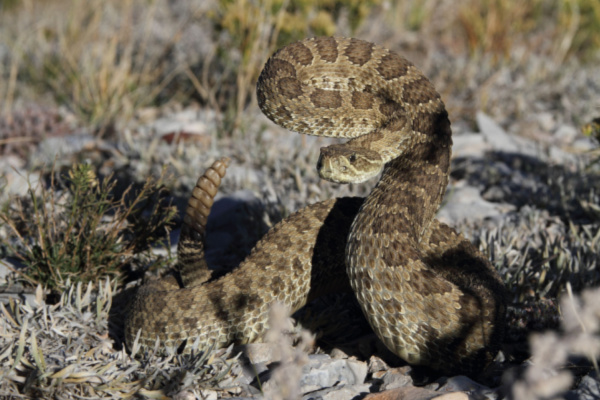Not everyone is sweltering in the seemingly never ending summer heat. Some of the reptilian variety actually thrive in it. Rattlesnakes, specifically.
Hayley Crowell, a Ph.D. candidate at the University of Michigan, and her team of researchers set out with the goal of finding out just what range of temps help snakes function at their best. “Those preferred body temperatures are actually a lot warmer than what they’re existing at in the wild,” Crowell said in an interview with AccuWeather reporter Sarah Gisriel. The study found that the ideal body temperature for the cold-blooded creatures was somewhere between 86 and 89 degrees Fahrenheit, much hotter than the average temperature of some of their habitats in the wild.
Researchers also observed that despite rattlesnakes appearing in every state in the contiguous United States, they appear much more frequently in hotter climates than cooler ones. If global temperatures continue to rise, Crowell said that could mean hibernation ends earlier in the spring for rattlesnakes, and they could still be active heading into winter. This means we’re looking at a jump in the rattlesnake population.
“There’s not gonna be tons of giant rattlesnakes everywhere. I wish there were, but there’s not,” Crowell said, because there is a downside of the extended hot months for the rattling reptiles. The longer rattlesnakes stay out in the sun, the more exposed they are to predatory birds. Their food supply could also diminish due to climate change. Crowell said mammals like ground squirrels, a major food source for rattlesnakes, will not do well in hotter climates. “Even if it’s good for the rattlesnakes, if there are no ecological resources for them, it’s kind of a moot point.”
Even if their food sources are cut in half though, that might not be a huge problem for rattlesnakes. Crowell said in an interview with USA TODAY that due to their extremely low metabolism, they can get by with just a couple meals a year. “They just do not need a lot of food at all to survive,” Crowell said. “A rattlesnake can totally survive just on one or two big ground squirrels a year if it needed to.”
Still, even though Crowell said the number of snake bites won’t drastically increase because of a jump in population, there are still plenty of rattlesnake incidents in the U.S. every year. According to the Centers for Disease Control and Prevention, about 7,000–8,000 people get bit by venomous snakes in the country annually, and about five of those bites are fatal. Many more of those bites — between 10 and 44 percent — cause lasting or permanent injury.
—
Photo Credit: Harris Motion Photo / Shutterstock.com
